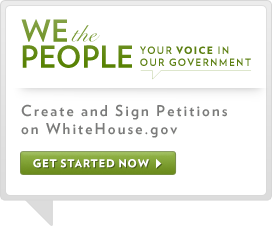Champions of Change Blog
Healthy Air, Healthy Kids
Posted by on July 17, 2013 at 12:20 PM EDT
Dr. Yadira Caraveo is being honored as a Champion of Change for her work on the front lines to protect public health in a changing climate.
Growing up in Colorado, you learn to appreciate clear blue skies and fresh mountain air – until the smog settles into the bowl-shaped Denver metro area, and suddenly the view isn’t so pretty. During our training medical professionals like me don’t receive much education on the potential health effects of what humans put into the air. We learn about bioterrorism, the negative effects of the food we put into our bodies, and the lung diseases affected by things as varied as keeping pigeons to popping too much popcorn. But we never really learn about the cloud of “smog” sitting over Denver and how it will affect our patients.
Upon graduating from medical school, I moved to Albuquerque, New Mexico to complete my training in pediatrics. Albuquerque is another bowl-shaped city flanked by mountains, where bad air can settle and linger for days. Living near the extinct volcanoes on the city’s west side, I could see the occasional cloud of smog settled over the city as I would drive into work. On those days I knew what I would see all day at my shift in the emergency department, the children’s ward, or the urgent care clinic: asthma exacerbations. On days where a brown blanket covered the desert city, I knew I’d be ordering a lot of albuterol, a medicine to help people breathe easier, putting kids on oxygen, and speaking to respiratory therapists. It would be a day of seeing children struggle just to breathe.
The focus on child advocacy drew me to residency in New Mexico. I was interested in learning about how to interact with politicians and candidates, advocate for increased healthcare access in a poor state, and protect the public programs my patients relied on. I was selected as a resident leader by the National Hispanic Medical Association and an intern in legislative affairs by the American Academy of Pediatrics. I spent time in Washington with both groups and connected with members of the Union of Concerned Scientists (UCS) and Voces Verdes. I participated in a conference on the public health concerns caused by emissions from coal-fired power plants and finally learned what I hadn’t been taught in medical school.
As a Latina, I am naturally drawn to Latino health issues. Nearly 50 percent of Latinos live in counties that regularly violate the ground level ozone, or smog, standards set by the Environmental Protection Agency, even though our standards for clean and safe air should be even stronger. EPA estimated that further lowering the level of ozone considered safe would prevent thousands of asthma exacerbations, heart attacks, missed days of school, and hospital visits and deaths. Obviously clean air affects everyone, but children are at a higher risk of these health effects than the adults who have the power to control pollution. Due to young children’s size, faster heart rates, and immature systems, their lungs and brains are particularly vulnerable to toxins in our air, water, and environment. Exposure at an early age could spell years of chronic illness and an impaired ability to learn, play, and work. Through UCS and Voces Verdes, I advocated for tightening emission standards for coal-fired power plants, and I continue to raise awareness about the health effects of climate change and air pollution.
Since leaving residency and starting private practice in Colorado, my advocacy efforts have shifted in part to local healthcare access issues in my hometown county and streamlining the referral system for children at risk of physical and cognitive delays due to various issues. But every time I drive down the hill into Denver and see the brown cloud hanging over the city, I worry for my patients and think of what else we can do to ensure that our children are not just eating healthy, growing, and learning but breathing safe air.
Dr. Yadira Caraveo is a General Pediatrician.
Learn more about Energy and Environment, Health CareCaring for Ourselves is Caring for Our Earth
Posted by on July 17, 2013 at 11:54 AM EDT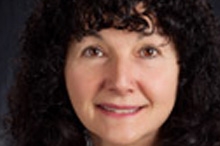
Dr. Georgia Milan is being honored as a Champion of Change for her work on the front lines to protect public health in a changing climate.
Last year, after 30 years as a family doctor, I decided to leave my clinical practice to focus on global health issues. I determined that the most significant public health threat of our time is climate change.
In some places, we are already seeing a rise in the number and intensity of floods, forest fires and other natural disasters. Infectious diseases are changing in response to changing climate patterns. Extreme weather events are threatening our food and water supplies. As ecosystems adjust to these changes, we are seeing more species face the threat of extinction. Air quality threats such as ozone pollution, commonly known as smog, are becoming harder to address, which can lead to increased disease levels and premature deaths. These problems are projected to get worse as our climate continues to warm.
Through my humanitarian work in other countries and as a physician with the Indian Health Service, I have seen the interdependence of people with the natural world and how much knowledge and appreciation of this is being lost in our modernized societies. It seems we have even forgotten our responsibility to future generations. But challenges linked to climate change are reinforcing how changes in the environment put our health and our children’s future in jeopardy.
It is clear to me that people need to hear from their doctors and the medical community about the potential human health impacts of climate change .
In Montana, we are discussing health impacts of climate change in a variety of forums. I work with a team that presents the annual “Turning the Tide” conference at St. Patrick’s Hospital in Missoula, which focuses on the connections between spirituality, science and health. This year, the topic was climate change and the event, “Reclaiming Human Health by Restoring the Planet,” included panels featuring spiritual leaders, climate experts and health professionals. The community participates through working groups to look at solutions to critical challenges.
People in Montana are starting to understand these challenges and seek out information from health professionals so they can make better decisions about projects like the proposed Otter Creek Mine and the Tongue River Railroad which would expand coal mining, transportation, and exports from Montana to Asia.
I am excited about the opportunities presented by being a Champion for Change and look forward to exploring more ways to help spread the word about the importance of addressing climate change now, before the threat to our health worsens.
Dr. Georgia Milan is a Physician.
Learn more about Energy and Environment, Health CareHealthy Climate, Healthy People
Posted by on July 17, 2013 at 11:03 AM EDT
Gary Cohen is being honored as a Champion of Change for his work on the front lines to protect public health in a changing climate.
As we continue to learn more about climate change, we are realizing that it is fundamentally a health issue that will affect everyone in the world. How it damages our health depends on where we live. If we live in Beijing or Baton Rouge, Louisiana, the air could become so poisoned we can't go outside of our homes. If we live in the Midwest of the United States, extreme weather may wreck our communities and heat waves may destroy our crops and increase risk of heat exhaustion. If we live in New York or New Orleans, we may experience stronger hurricanes more often that can flood our streets, trap us in homes with no power, and shut down our hospitals. For many communities climate change can lead to increased risk of asthma among our children and respiratory disease among our most vulnerable citizens. We are learning that climate change impacts can change the patterns of infectious diseases like Dengue fever and malaria, which are spreading by mosquitoes to places that have never seen these diseases before. We are learning that it is not possible to have healthy people on a sick planet.
These are all reasons why the healthcare sector has a unique responsibility to lead the fight against climate change.
First, we need to get better prepared for climate change impacts in our communities. Our hospitals and clinics need to be resilient and fortified so they can anchor the community response during extreme weather events. They need to be the last buildings standing in a hurricane rather than one of the first ones to go down. For example, if hospitals have on-site power they can continue to provide critical care to patients even if the grid is down for days. On-site power can also make hospitals more energy efficient, reduce greenhouse gas emissions and help hospitals save money.
Second, the healthcare industry appears to be addicted to fossil fuels. Hospitals use twice as much energy per square foot as schools and offices in part to fuel all the life-saving equipment they operate 24/7. That makes hospitals major carbon polluters. Given that healthcare is underpinned by an ethical imperative to “First, Do No Harm," they have a responsibility to reduce their carbon pollution and be leaders on renewable energy, energy efficiency, and other carbon mitigation efforts that support healthier people in healthier communities. Healthcare represents 18 percent of our economy. If we can harness the purchasing power of this critical sector, we can drive our economy toward a low carbon development path that will reduce our rising disease burden and spiraling healthcare costs. Toward this end, we have built a global coalition for Healthier Hospitals that is accelerating the adoption of sustainable and climate-friendly practices.
Third, healthcare professionals are some of the most effective spokespeople in our society. When we wanted society to address tobacco, we got nurses and doctors to stop smoking first. We banned cigarettes from hospitals, and we educated our patients about the dangers of tobacco. In the global campaign to kick our addiction to fossil fuels and toxic chemicals, doctors, nurses, and other healthcare workers need to be powerful spokespeople for policies that put a price on carbon and support the transition to a renewable energy and toxic-free future. There are 5 million healthcare workers in America. We can enlist them to become climate champions in our communities for local solutions and critical spokespeople at the state, national, and global levels for laws and treaties to rein in carbon pollution.
In this next period of our collective history, we will need to redefine the purpose of healthcare. It can no longer be exclusively focused on treating chronic disease in individual patients. Healthcare needs to expand its mission and address the environmental and social conditions that are making people sick in the first place. Healthcare needs to lead the fight against climate change. It is our best remedy to this global health emergency.
Gary Cohen is the President of Health Care Without Harm and Co-Founder of Healthier Hospitals Initiative.
Learn more about Energy and Environment, Health CareOne Real Voice for Millions of “Hypothetical Lives”
Posted by on July 17, 2013 at 10:39 AM EDT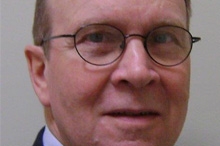
Dan Dolan-Laughlin is being honored as a Champion of Change for his work on the front lines to protect public health in a changing climate.
Although I am not a scientist, nor a doctor, I am someone who nearly lost his life to Chronic Obstructive Pulmonary Disease, or COPD. I am also someone who received a double-lung transplant, and someone for whom air quality means the difference between life and death.
Lung disease almost killed me. I suffered from COPD, for decades. As the disease progressed, I could no longer work. My quality of life declined – slowly at first, then more rapidly as I approached end-stage. I required round-the-clock oxygen therapy to perform even basic functions. Eventually, I wound up in the hospital with end-stage COPD. My doctor told me something no one is ever prepared to hear—that I had only several days left to live without mechanical support. And yet, a miracle occurred. Through organ donation, I was given the gift of life and hope: a healthy pair of lungs.
Though my darkest days are now behind me, the risk of infection, lung damage, and emergency room visits lingers every day the air is bad. I must be vigilant. I wear a mask when I am outdoors in the summer. Many days, I don’t even go outside. To me, a bad air day is akin to a hurricane, tornado, or earthquake: the risk is simply too great.
While my story is unique, my situation is not. I am not here simply to talk about my own battle for healthy air. I am here as an advocate for everyone with lung diseases. Asthma sufferers, COPD patients, and others rely on pollution controls to simply get through another day. Lung disease impacts people all over the country, young and old, poor and wealthy. According to the Natural Resources Defense Council, more than 159 million Americans live in communities where the air quality is hazardous to their health. That’s more than half the population! Every single one of them deserves the right to breathe healthy air. In my home state of Illinois, more than 4 million people suffer from cardiovascular or lung disease. Like me, each one of these people is at risk for health complications when the air quality is bad. Climate change threatens to make these already alarming air quality hazards worse.
Climate change is the number one public health issue of our time. Higher temperatures from climate change can enhance the conditions for ground level ozone – or smog - formation. Even with the steps that are in place to reduce smog, climate change is projected to make it more difficult to control unhealthy smog levels in the future in large parts of the United States.
Climate change can actually reverse the gains made in reducing the pollutants that cause smog. This means in the future we will need additional air pollution controls in order to reach the same level of ground level ozone .
Air pollution, including carbon pollution, also causes asthma attacks and congestive heart failure. It worsens chronic lung diseases like emphysema and bronchitis. For the elderly, people with bad health or those living in poverty, dirty air increases the likelihood of hospitalization and can even lead to premature death. And climate change has the potential to exacerbate the bad effects of other air pollutants!
Cleaner air will help people live healthier lives. The steps to get cleaner air are easier and cheaper than many people think. Last year, I testified at an Environmental Protection Agency hearing in support of strong standards to reduce carbon pollution from both new and existing power plants. When fully implemented, these standards will help people live healthier lives.
A single coal-fired power plant releases an average 3.7 million tons of carbon pollution. Just imagine the impact of our 580 existing coal-fired power plants on the next generation, especially on those who live with lung or heart disease.
Some people complain that cleaning up carbon pollution will cost too much or be a burden on the economy, but the steps to get cleaner air are easier and cheaper than many people think. In fact, from 1980 to 2011 air pollution decreased by 63 percent while our economy grew by 128 percent.
We’ve made a lot of progress, but there is obviously still work to be done. I am amazed that there is continued resistance to improving air quality. A few months ago, someone in Congress questioned the value of EPA regulations, stating the benefits of clean air are “often based on inflated estimates of hypothetical lives saved.”
Well, I am here to tell you that I am one of those “hypothetical” lives. I speak for the dozens of COPD patients I meet every week, the thousands who rely on the American Lung Association in Illinois for advice, information, and support, and the millions across the country who suffer with lung disease every day who feel the deck is stacked against them.
We are counting on this Administration, this Congress, and this country to join in the fight against climate change. Our lives depend on it.
Dan Dolan-Laughlin is a former Railroad Executive.
Learn more about Energy and Environment, Health CarePreparing New York for Climate and Health Impacts
Posted by on July 17, 2013 at 9:59 AM EDT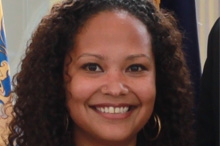
Kizzy Charles-Guzman is being honored as a Champion of Change for her work on the front lines to protect public health in a changing climate.
New York City already faces serious climate risks, such as heat waves, flooding, and coastal storms, which pose a significant risk to the health and safety of 8.2 million New Yorkers. For example, in 2006, a 10-day heat wave led to the deaths of 40 New Yorkers due to heat stroke and to an estimated 100 more natural-cause deaths than expected. Since 2009, nine heat waves, five tornados and two major hurricanes impacted the city. In October 2012, Superstorm Sandy struck New York City with a record-shattering storm surge, causing 44 deaths and numerous injuries, unprecedented, extensive damage to coastal neighborhoods, flooding major roads and buildings, disruptions in transit service throughout much of NYC, and billions of dollars in damage. Many may think of climate change as representing only a future risk. But in reality, as health professionals and New York City agencies that respond to protect our city’s residents know, we already face public health risks related to extreme weather events. Even before Superstorm Sandy’s enormous impact, the NYC Department of Health and Mental Hygiene (hereafter, “the Health Department”) had for several years supported programs and policies to prevent illness and death from heat waves, safely remediate moisture and mold problems, and address mental health consequences of disasters.
The New York City Panel on Climate Change projects that, with climate change, these types of extreme weather events will only increase in frequency, duration, and intensity. New York City is expected to face higher average summer temperatures and more rapidly rising sea levels, as well as more frequent and intense extreme weather events in the decades to come, potentially leading to many adverse health effects. Compounding these threats is the fact that the City has several characteristics that can intensify climate hazards. Its dense urban development contributes to the urban heat island effect during heat waves. Its highly developed shorefront places many residents in places prone to flooding in coastal storms. Its many high-rise residences can strand residents without elevator service and running water during power outages. Its diverse neighborhoods vary greatly in level of vulnerability to extreme weather events.
Over the last three years, the Health Department successfully implemented a Climate and Health program, which enhanced the City’s understanding of climate-related public health risks, identified vulnerable communities, characterized heat health awareness and behaviors to inform improved messaging, established collaborations with key partners, conducted outreach and developed heat wave readiness tools for service providers that serve vulnerable New Yorkers, and provided public health risk information to inform citywide sustainability and climate resilience planning efforts. This program contributed to the Superstorm Sandy response by developing and validating new cold illness symptom surveillance methods and implementing surveillance in the aftermath.
We still have a long road ahead of us. Our goal at the Health Department is to become climate-ready by strengthening our current responses and interventions, ensuring that we have the capacity, tools, and resources to be more effective in the future, and implementing strategic interventions that protect vulnerable neighborhoods, including the City’s growing population of seniors and other high-risk groups, from hazards likely to be exacerbated by climate change.
After years of working in service of New York City residents, I am honored to have been chosen as a White House Champion of Change and to work with colleagues at the Health Department and in other agencies committed the City’s health and environment. My team and I are motivated by the knowledge that our densely developed, transit-friendly, coastal city is not only a great place to live and work, but it affords our growing population a less carbon intensive lifestyle than the average U.S. citizen. By working with our partners to help our communities recover, rebuild, and prepare for the next climate-related threat, we are also contributing to the City’s sustainability and climate change mitigation goals.
Kizzy Charles-Guzman is the Director of the Climate and Health Program at the New York City Department of Health and Mental Hygiene (DOHMH).
Learn more about Energy and Environment, Health CareChanging the Lens: Communicating Public Health Issues
Posted by on July 17, 2013 at 9:32 AM EDT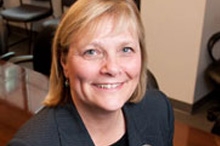
Laura Anderko is being honored as a Champion of Change for her work on the front lines to protect public health in a changing climate.
My birthday is Earth Day. I have at times wondered if this predisposes me to embrace environmental issues a bit more tightly than most. I remember at early age thinking about why society needed to take its relationship with the environment more seriously. Dirty water and air were choking the life out of fish, birds, and humans. Growing up in Chicago, I can remember the feeling of loss and sadness as buses spewed clouds of black smoke into the neighborhood. The Clean Air Act of 1970 brought relief and improved health.
As a student nurse in the 1970s (the decade when Earth Day was established), our curriculum was completely void of content about the connection between our earth and our health. As I grew professionally as a public health nurse, I actively explored those connections. I taught what I learned to nurses, student nurses, and the public, conducted research about those connections, and finally began advocating for a cleaner, healthier planet for future generations.
Partnerships between the health sector and other climate change-related sectors and a focus on the common good are critical in public health and have been key to my success educating and advocating for a “health in all policy” approach, particularly in areas such as clean energy and the environment. Few people understand that health is often not a consideration in policy. Establishing partnerships with other sectors broadens the lens for viewing the effects of climate change. Even some climate experts are unfamiliar with the range of health consequences of climate change. Although many experts are familiar with the link between heat, ozone, pollen, and poor air quality resulting in increased risks for asthma, few understand other potential health impacts. For example, as temperatures increase, the geographical range for vector-borne disease such as malaria and dengue fever can expand too. The scale of health risks is on par with the enormity of climate change!
Along the way, I have been humbled by the knowledge and passion of individuals and the commitment behind many organizations that work tirelessly to connect the dots and advocate for a cleaner environment and healthier world. There have been many climate partners in my work to address the potential impacts of climate change on the public’s health:
- The Alliance of Nurses for Healthy Environments, brought nurses together from across the nation to integrate environmental health content into nursing curriculum, practice, and research, and to support nurses to promote healthy environmental policy
- The Georgetown Environment Initiative and the Georgetown Climate Center, created interdisciplinary approaches to partner with public health professionals and community residents to design climate change adaptation plans, especially in poor communities
- The American Lung Association, Big Shoulders, the Catholic Health Association, Climate Reality Project, Health Care without Harm, and the National Resources Defense Council have provided numerous opportunities to more effectively communicate the health risks associated with climate change and ways to reduce them through webinars, op-eds, public health reports, testimony, and community educational programs
- The unsung heroes of governmental agencies who have collaborated to translate the evidence into meaningful public health action. Along with students, I have worked closely with the District of Columbia Department of Health to expand the capacity of an environmental public health tracking system that links weather and health data, and to use this data to assist families to take protective action against asthma risks.
The enormity of global climate change and its impacts on each and every living thing can conjure a feeling of hopelessness. It is through working together to educate and advocate that we can restore hope to the conversation. Climate change is more than an economic issue. Climate change is a health issue. In President Obama’s address on climate change and clean energy at Georgetown University in June, he remarked that we didn’t have to decide between the health of our children and health of our economy. We must be vigilant in communicating and addressing the global health impacts of climate change. I am honored to receive the Champions of Change award and grateful to Georgetown University for its continued support of my work. It is my hope that society will continue to work collectively to ensure a cleaner, healthier earth for future generations.
Laura Anderko is the Robert and Kathleen Scanlon Endowed Chair in Values Based Health Care at Georgetown University School of Nursing & Health Studies.
Learn more about Energy and Environment, Health Care
- &lsaquo previous
- …
- 50
- 51
- 52
- 53
- 54
- 55
- 56
- 57
- 58
- …
- next &rsaquo
White House Blogs
- The White House Blog
- Middle Class Task Force
- Council of Economic Advisers
- Council on Environmental Quality
- Council on Women and Girls
- Office of Intergovernmental Affairs
- Office of Management and Budget
- Office of Public Engagement
- Office of Science & Tech Policy
- Office of Urban Affairs
- Open Government
- Faith and Neighborhood Partnerships
- Social Innovation and Civic Participation
- US Trade Representative
- Office National Drug Control Policy
categories
- AIDS Policy
- Alaska
- Blueprint for an America Built to Last
- Budget
- Civil Rights
- Defense
- Disabilities
- Economy
- Education
- Energy and Environment
- Equal Pay
- Ethics
- Faith Based
- Fiscal Responsibility
- Foreign Policy
- Grab Bag
- Health Care
- Homeland Security
- Immigration
- Innovation Fellows
- Inside the White House
- Middle Class Security
- Open Government
- Poverty
- Rural
- Seniors and Social Security
- Service
- Social Innovation
- State of the Union
- Taxes
- Technology
- Urban Policy
- Veterans
- Violence Prevention
- White House Internships
- Women
- Working Families
- Additional Issues

